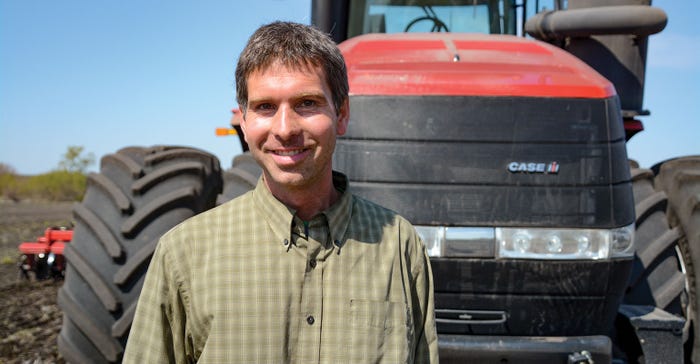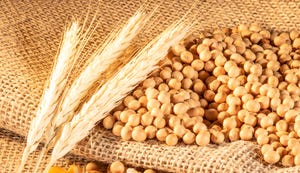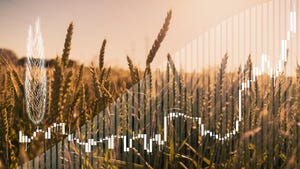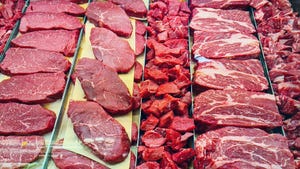
It’s still too early to know for certain, but 2022 is already looking like a year that farmers will remember for a long time. Commodity prices are at attractive levels, but it’s still no guarantee that profits will follow because input costs have also risen steeply from a year ago.
“Input costs are just crazy right now,” acknowledges Amy France, who farms with her husband, Clint, and son Caleb in western Kansas. “It leaves us with very little wiggle room.”
Before the busy planting season kicks into full swing, you’ll have a chance to rally the troops, make sure all equipment is running smoothly, fine-tune your marketing plan and do everything else in your control to align yourself for another strong season. What ingredients will be most important in your recipe for success in 2022?
Crop swap
One big lingering question this year is whether farmers will swap out at least some of their corn acres for something less nitrogen-intensive, such as soybeans. A Farm Futures grower survey conducted in December suggests this could be the case, with an estimated 3.2% drop in corn acres and a 5.9% increase in soybean acres nationwide. In fact, soybean acres could surpass corn for just the second time on record, according to the survey.
That’s trendspotting on a macro level, of course. Some farmers may make significant changes this year, while others will stay the course on their rotations.
For France, who farms very few irrigated acres in a more arid production region, it was time to dial in some big changes.
“Right or wrong, we decided to ‘sit out this round’ and plant little to no corn because we can’t bear the risk where we are,” she says, adding that those acres will go into sorghum production. “Sorghum does well even if we don’t get a lot of rain.”
Other farmers, such as Kyle Kohlhagen in northwestern Indiana, are more reluctant to veer too far away from their typical acreage mixes.
“We’re sticking with our normal rotations for now,” he says. “We’re biting the bullet [on fertilizer costs], but we’re going to be very careful with our applications and watch every ounce we put on and will probably lower our rates a little bit.”
Market madness
The combination of high commodity prices and high input prices could prove dangerous to some farmers, warns Matt Bennett, an Illinois farmer and founding partner of AgMarket.Net.
“One of the biggest challenges this year is that you need to pay attention to defending your potential income more aggressively,” he says. “Don’t get lulled to sleep by high prices. There’s going to be a lot more money invested in this year’s crop.”
Marketing plans always need to be flexible, but that may be especially true this year, Bennett adds.
“A lot of people may have had a good marketing plan put together three months ago that looks out of date already,” he says.
Marketers like Naomi Blohm feel like their heads have been on a swivel so far this year.
“There are just so many unanswered questions,” she says.
Here are a few examples worth considering:
Will less fertilizer use lead to a noticeable nationwide yield drag this season?
Will crude oil cross the $100-per-barrel benchmark? “When funds buy crude oil, they tend to buy corn and soybeans as well,” says Blohm, senior market adviser at Total Farm Marketing by Stewart Peterson.
What will this year’s wheat crop look like coming out of dormancy?
Will the data in USDA’s Prospective Plantings report on March 31 be bullish or bearish?
Will the value of the U.S. dollar break out of its current channel?
How will South American production ultimately fare this season?
Will there be significant last-minute acre switches?
“You really have to watch everything happening around the world,” Blohm concludes. “March and April will be the time to protect unpriced bushels and even ask if it’s worth pursuing re-ownership strategies.”
Project management
Communication has always been key, but preferred methods of communication are constantly in flux. For years, the standard was in-person meetings — or barring that, a phone call. Texting and emailing have become more in vogue on a lot of operations.
If your phone is constantly buzzing in your pocket because of various push notifications, there may be a better way.
“You can get interrupted constantly with back-and-forth communication that doesn’t really need to occur,” says Tim Schaefer, founder of Minnesota-based Encore Consultants.
Mobile apps such as Slack or Trello are trying to prove themselves as the next evolution in efficient communications. Both platforms depend on building channels and lists that can easily be shared with a group. Users can even attach photos or videos that go along with various tasks.
“These tools help you create task lists or orders for the day,” Schaefer says. “It goes to everyone who needs to see it, and you know when it’s been read. It really can build accountability, and there’s power in not getting interrupted while still keeping tabs on everything.”
Another powerful project management tool that few farmers know about is called a Gantt chart, named after engineer Adam Gantt, highly regarded as a project management pioneer of the early 1900s. While Gantt charts have been plotted out using pencil and paper for decades, they have been digitized as online tools in recent years.
So what does a Gantt chart do, exactly? It allows users to list activities, understand when each activity begins and ends, and learn what activities overlap with each other.
“You could actually map out your entire year with this tool,” Schaefer says. “I think farms need some sort of project management tool because there are so many moving parts. Don’t just keep things in a notebook or in your head.”
Ready for takeoff?
Overall, farmers are buckling up for a wild ride this season.
“It feels a little like flying the plane while it’s being assembled,” Kohlhagen jokes. “There is just so much volatility and so many unknowns.”
But Kohlhagen says he’ll do his best to avoid overthinking sales later this year.
“You need to have the attitude that the glass is half full,” he concludes.

About the Author(s)
You May Also Like






